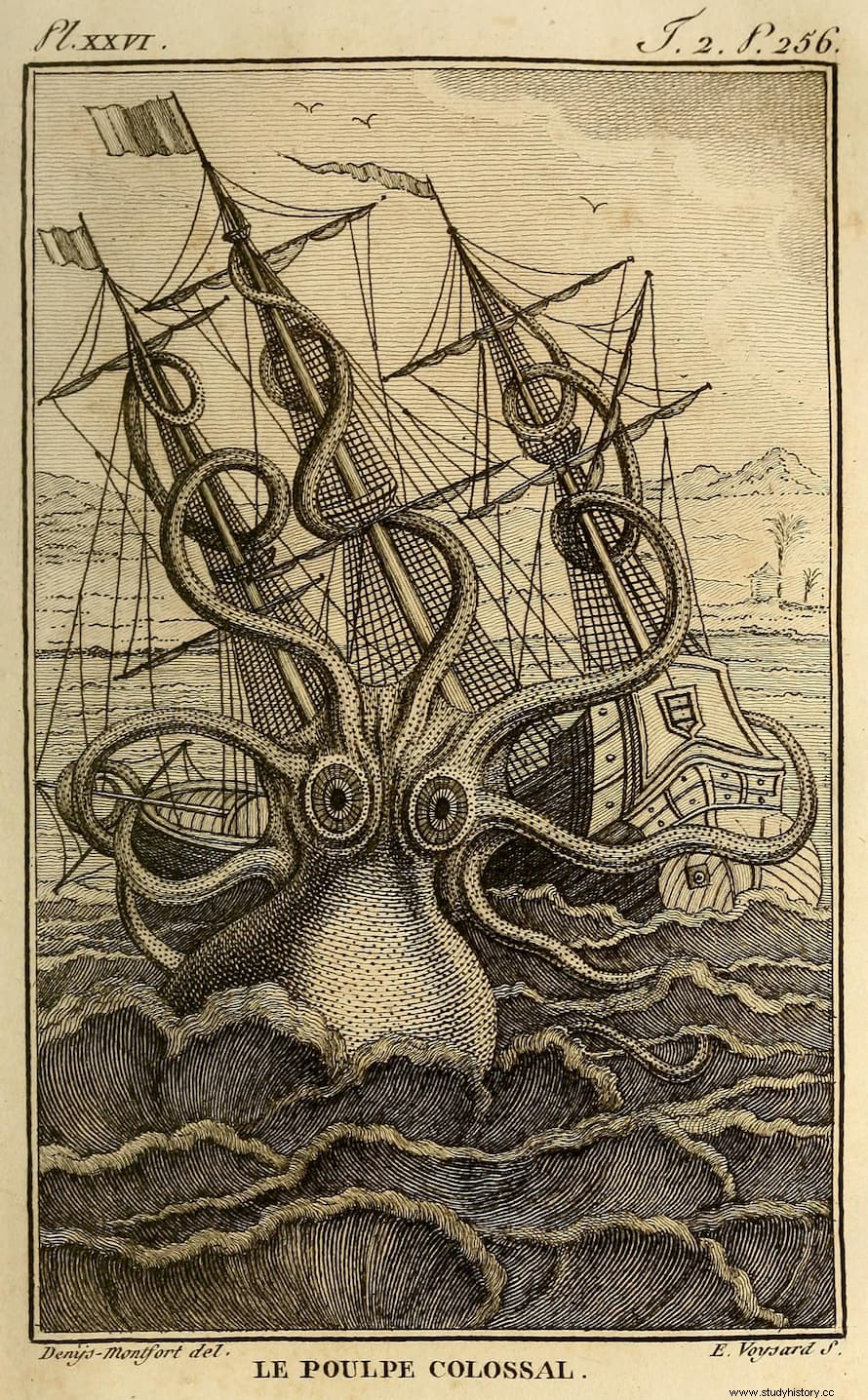The Kraken It is one of the oldest terrifying marine myths that are known. This abyssal creature was the terror of sailors, who believed that beyond the known seas inhabited these and other singular beings that were frightening even simply pronouncing their name.

The Kraken is a myth that until its appearance in movies like Pirates of the Caribbean or Clash of the Titans was only known by lovers of this type of fantastic legend. But the presence of the Kraken can already be found in medieval Norse mythology and folklore.
Its first reference is found in a manuscript of King Sverre of Norway dated c.1180; it was said that he was one of the many monsters that existed in the sea. Its size was huge, like an island, and it was capable of sinking ships.
Beings similar or assimilated to the Kraken would be the so-called Hafgufa and Lyngbark, described in the Icelandic Saga of Örvar-Oddr from the 13th century and in the Norwegian encyclopedia Konungs Skuggsjá dated around 1250.
The Kakren was a giant squid or octopus of more than a mile in length that was often mistaken by sailors as a sea serpent, since only its back could be seen. The Swedish naturalist Linnaeus , to whom we owe the taxonomy of living organisms, included in the first edition of his Systema Naturae (1735) an animal he calls Sepia microcosmus , that is, the Kraken. Later, Olaus Magnus, Bishop of Bergen, described it extensively in his History of Norway, published in the mid-16th century.
In reality, the Kraken was nothing more than a squid, the so-called Architeuthis , a giant cephalopod between 15 and 20 meters in length that inhabits the abyssal depths. Although multiple specimens have been found over the years, the myth and mystery of this animal is still alive, as the taxonomy of the Architeuthis family has not yet been resolved.
